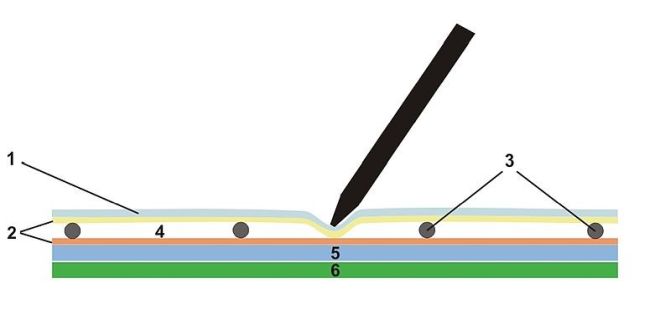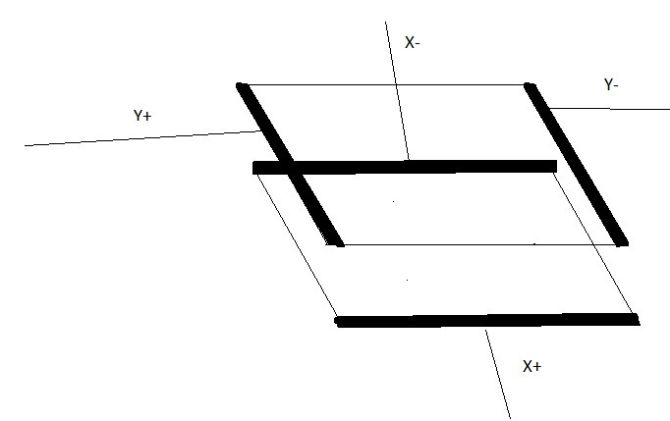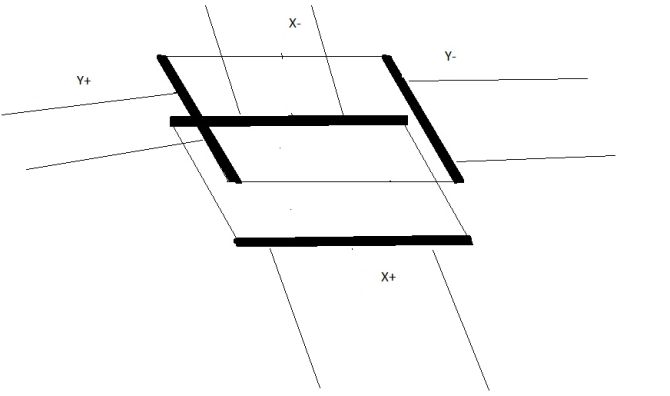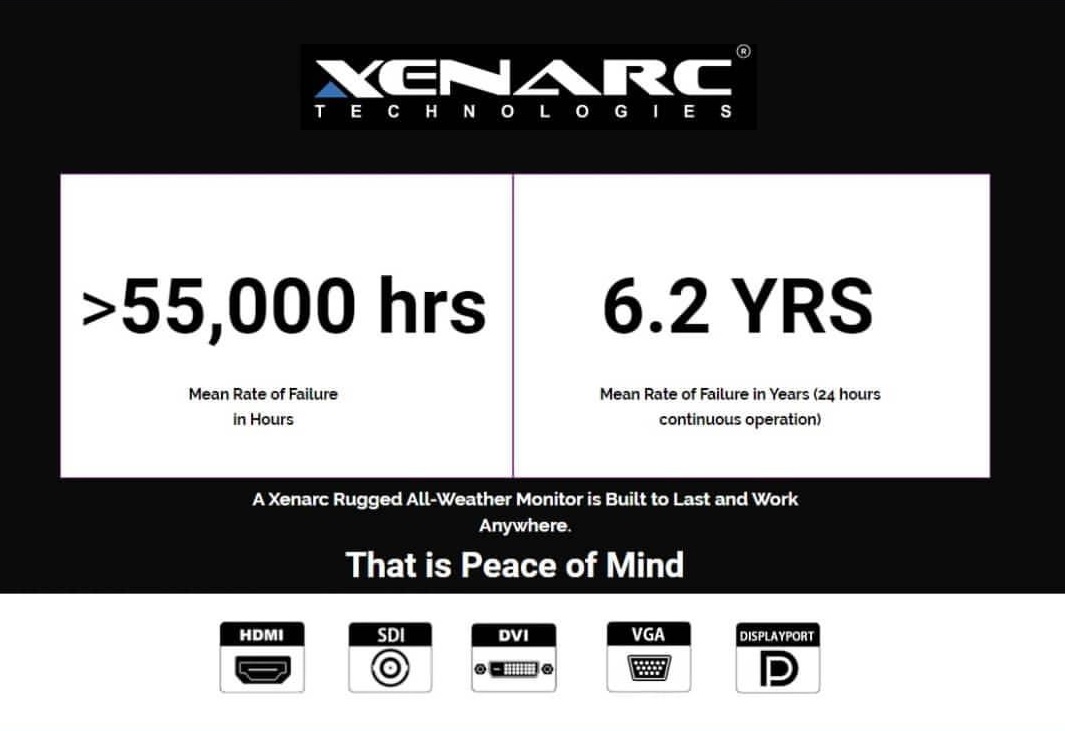The resistive touchscreen has always been the most common type used in industrial electronics. This is mostly because they’re cheaper to make and are easier to use in difficult environments.
The technology relies on resistance, meaning the pressure that’s applied to the screen itself. This type of touchscreen is created out of two very thin layers of material, separated by a thin gap. The top layer is typically some type of clear poly-carbonate material, while the bottom layer is made up of a rigid material. Manufacturers typically use PET film and glass for these layers.

The upper and bottom layers are lined with conducting material like indium tin oxide (ITO). The conducting sides of each layer face one another.
Finally, spacers are placed in the thin gap between the two layers to prevent them from touching when the screen isn’t in use.
The diagram above is a simple guide showing how this technology works.
- 1: The top, flexible poly-carbonate layer
- 2 & 3: Thin, conductive, indium tin oxide layers
- 4: Spacer dots between the conductive layers
- 5: The rigid bottom layer, typically made of glass
- 6: Sensors that detect change of voltage when conductive layers touch
When you press your finger or a stylus against the screen, it creates a change in resistance (an increase in voltage). The sensor layer then detects this change, and the tablet or mobile phone processor calculates the coordinates of that change.
The 3 Types of Resistive Touchscreens
Resistive touchscreen technology relies on electrodes that layer a uniform voltage across the entire conductive area. This provides a specific voltage reading when an area of the two years make contact.
The type of resistive layout determines the durability and sensitivity of the entire circuit.
4-Wire Analog
In a 4-wire analog setup, both the top and bottom layers contain two electrodes called “bushbars”.
These electrodes are oriented perpendicular to one another.

Electrodes on the top sheet are the positive and negative Y axis, while electrodes on the bottom are the positive and negative X axis.
Using this sort of electrical-coordinate setup, the mobile device can sense the coordinates where the two layers have come in contact.
5-Wire Analog
A 5-wire analog setup consists of four electrodes placed at each corner of the bottom layer. There are four wires that connect these electrodes together.
The fifth wire is the “sensing wire” embedded into the top layer.

When your finger or stylus makes any area of the two layers touch, the sensing wire sends the voltage for the coordinates to the processor.
With fewer components and a simpler design, the 5-wire analog circuit is considered to be a bit more durable than other designs.
8-Wire Analog
The most sensitive resistive screen design is that of the 8-wire sensing circuit.
The layout is similar to the 4-wire analog, but each of the bar electrodes contain two wires. This introduces a bit of redundancy into the circuit.

This is because even if one of the wire pairs loses resistance over time, the second wire provides a secondary signal to the processor.
This means that a more expensive resistive touchscreen with an 8-wire analog circuit will last longer. It also avoids the “drift” problems older phones used to have when trying to sense the location of your finger or stylus.
The Disadvantages of Resistive Touchscreens
Resistive touchscreens are meant to sense the location of one touch, and early generation touchscreens couldn’t respond to two-finger pinch or zoom actions.
However, later generations saw some mobile device manufacturers introducing new algorithms and other tricks that allowed for two-finger touch features.
Some other limitations include:
- Less sensitive to light touch
- In many cases can’t be used with gloves on
- Thick top layer creates less clarity for the display
- The screen material is usually more easily scratched or damaged
In most cases such touchscreens are difficult or impossible to repair.

Xenarc Rugged Touchscreen Monitors 7", 8", 9", 10", 12", 15", 18", 24" are built tough to last. The Mean Time Between Failure (MTBF) for a Xenarc Technologies Rugged Monitor is > 55,000 hours OR 6.2 Years of continuous operation and with the new 3 Year Warranty, a Xenarc Rugged Monitor gives you truly peace of mind.
Xenarc Technologies All-Weather Rugged 7", 8", 9", 10", 12", 15", 18", 24" Monitors are perfect Human Machine Interface for Smart Homes, Smart Factories, Smart Offices, Smart Vehicles, Smart Stores, Smart Cities. IIoT, IoT, Industry 4.0 and for low voltage and indoor or outdoor applications.
Sign Up For Wholesale/Bulk Pricing
Resellers
Integrators
Custom Displays
Government
Education
Military














